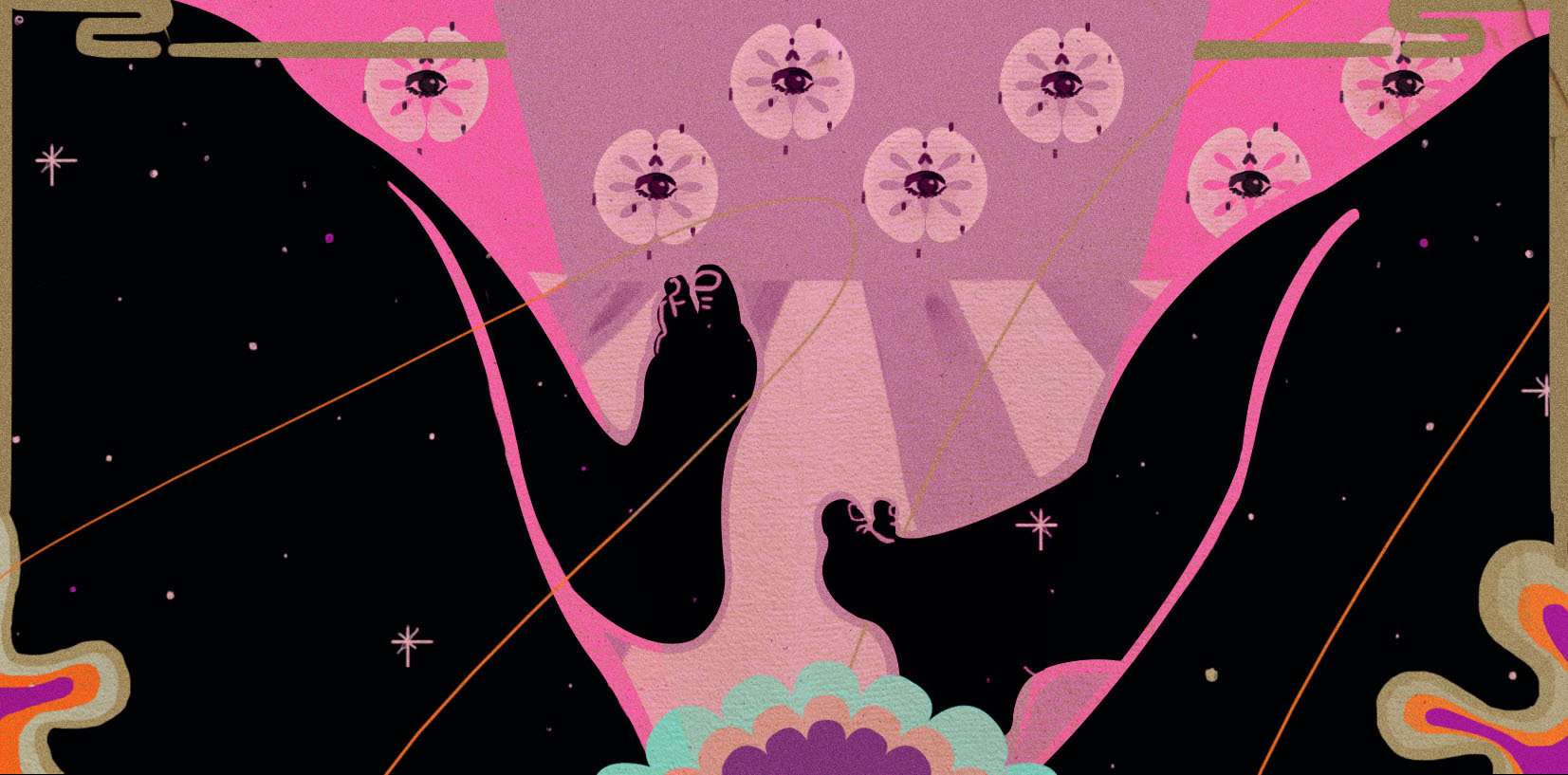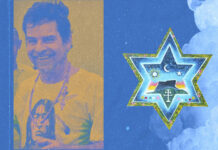- The Future of Sex and Psychedelics: An Agenda for Research - April 24, 2025
- L’avenir des recherches sur le sexe et les psychédéliques - April 24, 2025
- Acid and Orgasms: Why LSD Failed to Sexually Liberate Women - October 7, 2020

Was LSD ever a “sex drug” for women? In the 1960s, the answer appeared to be yes. Interviewed for Playboy in 1966, Timothy Leary went so far as to pronounce LSD, in his typically understated way, “the most powerful aphrodisiac ever discovered by man”. He was cautious to emphasise the subjective nature of the effects of the drug on sexual experience, but in response to a question about LSD’s ability to help women who ordinarily have difficulty achieving orgasm, Leary made a bombastic claim: ”In a carefully prepared, loving LSD session, a woman will inevitably have several hundred orgasms.”
Outlandish as these assertions seem now, the entanglement of LSD use and sexual liberation in cultural narratives prevalent in the late 1960s tended to perpetuate Leary’s assertions: that LSD had the potential, when administered in the right setting, to enhance women’s experiences of sex. Leary’s colleague Robert Anton Wilson’s book, Sex and Drugs: A Journey Beyond Limits, published in 1973 by Playboy Press, coined a useful neologism for this entanglement. He described the period in which the drug revolution and sexual revolution intersected as an “eroto-psychedelic era”:
“What has happened, and is continuing to happen as more and more converts climb on the eroto-psychedelic bandwagon, can be described – paradoxically – as an upsurge of interest in the nonphysical side of sex.”
Robert Anton Wilson
Wilson was doubtful about the physiological effects Leary claimed LSD might have on sex, but he still saw the potential of psychedelics to act as interlocutors for the libido. He thought acid might particularly nurture the sexual liberation of women, whom he regarded as less interested in physical pleasure, and more invested in the potential of sex for individual and social empowerment. At odds with Leary’s claim as to LSD’s potential to trigger “several hundred orgasms,” for Wilson, the important function of psychedelics for women’s sexuality was their exploratory potential. For women grappling with sexual problems, he believed LSD might also have a role to play in resolving distinctly “feminine” neuroses around sex, such as “frigidity.”
The pivot away from the physiological understanding of sexual pleasure of the 50s opened up a space for a burgeoning generation of psychosexual therapists attuned to the cultural zeitgeists in which they worked. This movement well pre-dated Leary’s pronouncements. Advocates of psychedelic therapy who used LSD in their practice often predicated their work on reshaping women’s sexual inhibitions, attempting to use LSD to help women explore, repair, and transform their relationship with sex. For example, Wilson also cites with approval the work of Thomas Ling and John Buckland at Marlborough Day Hospital in London on the successful use of LSD therapy for “frigidity”. Following Masters and Johnson’s research on sexual function in the 1950s, “frigidity” in the 1960s was less likely a diagnosis given to housewives who failed to fulfil their marital duty, and instead more prone to be self-diagnosed by women who felt at odds with the changing, increasingly liberated sexual culture. LSD appeared to provide a tool to loosen sexual inhibition and resolve past trauma.
Gaming the Gatekeepers
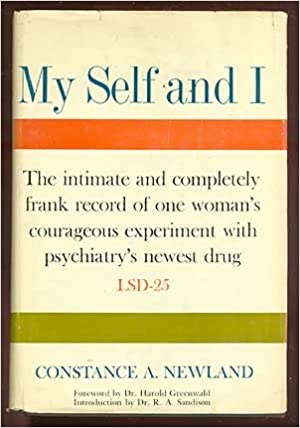
The most well-known case history of frigidity being “cured” under LSD therapy pre-prohibition is particularly notable because it was authored by the patient herself. Writing under a pseudonym, Constance Newland’s My Self and I was first published in 1959 to approving reviews from LSD advocates in the psychiatric profession. Two (Harold Greenwald and Ralph Sandland) even wrote forewords for the book. The text is a lengthy narrative of Newland’s journey through LSD therapy, which she entered privately in answer to an advertisement looking for participants to undergo a therapeutic trial. Newland’s interest in LSD appears purely recreational. To be accepted into the trial, though, she was instructed by the therapist, “Dr M”, that she must conjure up a neurosis which could be explored in guided 5-hour sessions. Momentarily stumped, she named frigidity as the problem she hoped to resolve, and Dr M agreed to treat her.
Over the course of the book, Newland describes in detail the explicitly erotic visions she experienced under the influence, often disturbing, sometimes ecstatic. Eventually, recounting the final session, she identifies a traumatic event in her childhood that she believed caused her lack of interest in sex in adulthood.
It is not at all clear why the foreword authors concluded that LSD had cured Newland’s self-diagnosed neurosis. Rather than aiding her perceived problem with desire, LSD transformed her, in Greenwald’s words, from a “model of the frozen, ruthlessly efficient American career woman” to, in her words, “a graduate student of psychology, without a man but without the frantic need for one, enjoying hugely my roles of mother and middle-aged college girl” (p. 258).
Quite how the treatment transformed her relationship with sex beyond the therapeutic setting is unclear. What does seem evident from Newland’s own words is that her experience of LSD therapy allowed her to undergo a process of what we might now call sexual self-actualization, making peace with the tensions underpinning her sexuality rather than specifically acting as an aphrodisiac.
While Greenwald described the transformation of Newland as “miraculous”, I find Sandland’s introduction to a later version of the text more circumspect. He cautioned that the therapeutic method used on Newland remained tenuous: “It must be remembered that we are still far from perfecting this treatment, and that if its many dangers are to be avoided it must be carried out in a hospital or clinic environment by skilled therapists” (p. 13). In other words, if women were to take LSD to grapple with sexual problems, the confirmation or diagnosis of the problem, the administration of the drug, and the controlled environment in which the therapy was undertaken must be closely gatekept by physicians and therapists who, overwhelmingly, were men.
From Sexual Paradise to Sexual Purgatory
This view that there was a legitimate context in which women might explore their sexualities with the help of LSD was not confined to therapists or physicians. As the 60s wore on and the utopian promise of countercultural movements did not bear out in tangible social change, the relationship between psychedelics and women’s sexual liberation became increasingly barbed.
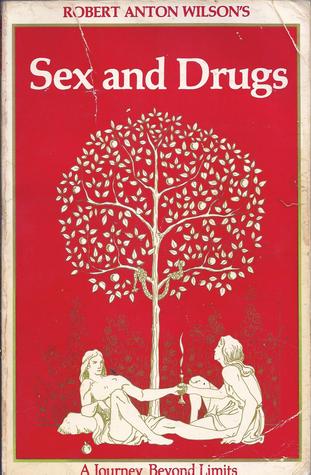
Wilson spent the opening chapter of Sex and Drugs recalling his experience a decade earlier of advising a woman named Jane (“the Ice Maiden”, as she is termed in the opening preface) that although he had read a number of studies in which LSD appeared to “cure” frigidity, he would not procure the drug for her to experiment on her own terms. He instead recommends that she should seek out psychedelic therapy. Frustrated, Jane ignores his warning and buys it herself from a dealer. Sure enough, Wilson observes that Leary’s hypothesis was borne out; LSD proved “a perfect cure in one night. She says she reached climax eight times” (p. 32).
Nevertheless, Jane’s sexual awakening then swerves rapidly into a cautionary tale. Jane continues to experiment with LSD, but when Wilson next encounters Jane, he remarks that she had recently been confined to a mental institution having made a suicide attempt.
“I was to become familiar with the pattern…an uptight person would find liberation, the energies would flow, the neurotic armor would fall off, a new and naked soul would be born – and then the old patterns would reassert themselves and the person would sink into depression, if not psychosis or suicide. The pattern became more than familiar, it even became commonplace, as did the quest for a drug cure for sexual problems.”
Robert Anton Wilson, Sex and Drugs, p. 33.
LSD, Sex, and the Sexual Anxiety of the 1960s and 1970s
A number of other small-press books published in the late 60s and early 70s that I encountered at the Ludlow-Santo Domingo Library confirmed this pattern in far less measured terms than Wilson. In these texts, women’s experimentations with sex and LSD become a portent for all that was wrong with the counterculture and appear to channel cultural anxieties around women’s changing sexual status, interests and rights. This appeared especially exacerbated when the women whose stories were related did not fit the thoroughly middle-class, “ruthlessly professional” example of successful treatment provided by Newland.
Titles such as Sexual Rebellion in the Sixties (1965), Psychedelic Sex (1969), The Psychedelic Orgasm (1969), Hippie Sex Communes (1970), The Sex Drugs (1970), Hippies, Sex and Drugs (1972), all positioned by their authors as academic studies, seem to operate within a consensus that not only did experimental use of LSD lead young women drawn to the counterculture to engage in ever more degrading acts, but actually led them to become “nymphomaniacs,” a diagnosis at the opposite end of the spectrum from frigidity, and which indicated an excessive or uncontrollable sexual desire specifically levelled at women. The Psychedelic Orgasm explicitly suggests that its protagonist, Mary, is representative of “the archetypal hippie girl of the Sixties”:
“At sixteen she was definitely on the road to hypersexuality – and without guidance, she could not fight the insistent immorality within herself.”
Christopher Laine, The Psychedelic Orgasm, p. 182.
Sure enough, by the end of the book Mary was confined to a mental institution, diagnosed as a hapless nymphomaniac.
It seems Leary’s claim that LSD might enhance women’s sexual experiences was by no means universally accepted. Women’s struggle for agency in the more sexually permissive culture of the 60s were in both clinical and countercultural contexts conceived as problems of individual dysfunction. On the one hand, too little sexual interest might be cured through controlled environments under therapeutic supervision. On the other, experimentation with LSD in the name of sexual enhancement undertaken by the wrong sort of woman was considered similarly pathological and was condemned even by those who had historically advocated for its benefits. Psychedelic experience in this period was closely gatekept, not as a device to jettison women towards sexual paradise, but one destined to keep them in purgatory.
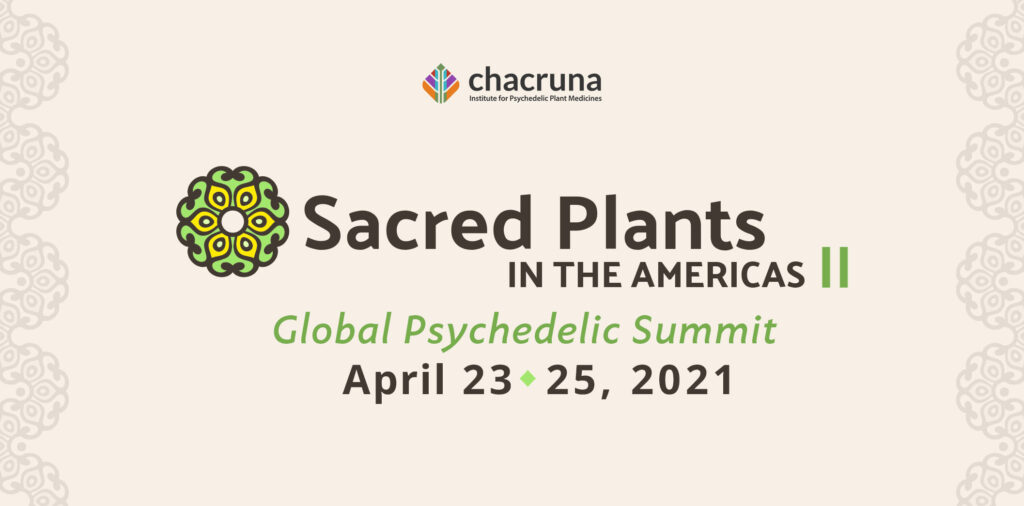
Join us at Sacred Plants in the Americas II
This interplay between women’s illicit experimentation with chemical enhancement of sex and medically sanctioned prescription is not confined to LSD. Drugs believed to have the qualities of an aphrodisiac are necessarily a product of their cultural epoch. As familiar debates play out today about the recently FDA approval of Vyleesi – the latest iteration of a “female Viagra” – it seems an important time to ask why we remain invested in the idea that women’s sexual pleasures are achieved naturally, without enhancement, and often by non-physical means. What does seem likely is that legitimate access to chemical sexual pleasures will remain a privilege afforded only to those, like Constance Newland, equipped to game the gatekeepers.
Note: This article draws on research generously supported by the Wellcome Trust [Grant no. 207938/Z/17/Z], undertaken collaboratively with Leah Moyle and Ben Mechen.
Art by Karina Alvarez.
Take a minute to browse our stock:
Did you enjoy reading this article?
Please support Chacruna's work by donating to us. We are an independent organization and we offer free education and advocacy for psychedelic plant medicines. We are a team of dedicated volunteers!
Can you help Chacruna advance cultural understanding around these substances?


